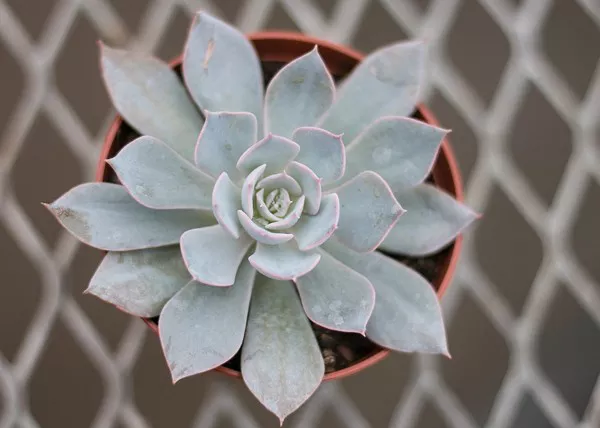Succulents, with their striking shapes and vibrant colors, have become popular choices for indoor and outdoor gardening enthusiasts. While these resilient plants are renowned for their ability to thrive in arid conditions with minimal care, understanding how often to feed succulents is essential for maintaining their health and vitality. In this article, we explore the factors that influence succulent feeding frequency, the types of nutrients they require, and best practices for ensuring your succulents receive adequate nourishment.
Factors Influencing Succulent Feeding Frequency
Determining how often to feed succulents involves considering several factors that influence their nutrient requirements. One key factor is the succulent’s growth stage. During the active growing season, typically in spring and summer, succulents require more frequent feeding to support their growth and development. Conversely, during the dormant winter months, succulents experience slower growth and may require less frequent feeding. Additionally, factors such as light exposure, temperature, and soil composition can impact nutrient uptake and metabolism in succulents.
Understanding the Nutritional Needs of Succulents
Succulents have specific nutritional needs that must be met to support their growth and overall health. While they are adapted to thrive in nutrient-poor soils, succulents still require essential macronutrients such as nitrogen, phosphorus, and potassium, as well as micronutrients like iron, magnesium, and calcium. These nutrients play critical roles in various physiological processes, including photosynthesis, cell division, and enzyme activity. Providing a balanced fertilizer formulation that meets these nutritional requirements is essential for promoting optimal growth and vitality in succulents.
Choosing the Right Fertilizer for Succulents
Selecting the appropriate fertilizer is crucial for ensuring that succulents receive the nutrients they need without risking nutrient imbalances or damage to the plants. Look for a fertilizer specifically formulated for succulents or cacti, as these blends are tailored to meet the unique needs of these plants. Avoid using fertilizers high in nitrogen, as excessive nitrogen can promote excessive vegetative growth at the expense of flowering and overall plant health. Instead, opt for a balanced fertilizer with a higher phosphorus and potassium content to support root development and flowering in succulents.
See Also: How to make fake succulents look real?
Understanding Fertilizer Application Rates for Succulents
Determining the proper fertilizer application rate is essential for preventing overfertilization, which can lead to nutrient toxicity and damage to the succulents. As a general rule of thumb, dilute the fertilizer to half or one-quarter of the recommended strength to avoid overwhelming the plants with nutrients. Apply the diluted fertilizer to the soil around the base of the succulent, rather than directly onto the foliage, to minimize the risk of leaf burn. Fertilize succulents sparingly, typically every 4-6 weeks during the growing season, and reduce or withhold fertilizer during the dormant winter months.
Observing Signs of Nutrient Deficiency or Excess in Succulents
Monitoring your succulents for signs of nutrient deficiency or excess is essential for adjusting your feeding regimen accordingly. Symptoms of nutrient deficiency may include yellowing or browning leaves, stunted growth, and poor flowering. In contrast, signs of nutrient excess may manifest as leaf discoloration, leaf burn, or distorted growth. Regularly inspecting your succulents for these signs allows for prompt intervention and adjustment of your fertilization practices to ensure that your plants receive the nutrients they need without experiencing stress or damage.
Feeding Succulents Based on Growth Stage and Environmental Conditions
Adapting your feeding schedule based on the succulent’s growth stage and environmental conditions is crucial for providing targeted nutrition and promoting healthy growth. During the active growing season, increase the frequency of feeding to support the succulent’s increased metabolic demands and rapid growth. In contrast, reduce or withhold feeding during the dormant winter months when succulents experience slower growth and reduced nutrient uptake. Additionally, consider factors such as temperature, light exposure, and humidity levels when determining the optimal feeding regimen for your succulents.
Incorporating Organic Fertilizers for Sustainable Succulent Care
For gardeners seeking to minimize their environmental impact and promote sustainable gardening practices, organic fertilizers offer a natural alternative to synthetic fertilizers. Organic fertilizers derived from plant or animal sources provide a slow-release form of nutrients that gradually break down in the soil, reducing the risk of nutrient leaching and runoff. Compost, compost tea, and worm castings are examples of organic fertilizers that can enrich the soil and promote beneficial microbial activity, enhancing the overall health and resilience of succulents.
Monitoring and Adjusting Succulent Feeding Practices Over Time
Successful succulent care requires ongoing monitoring and adjustment of feeding practices to ensure that the plants receive the nutrients they need to thrive. Keep track of your feeding schedule and observe how your succulents respond to the fertilization regimen. If you notice signs of nutrient deficiency or excess, adjust the frequency or concentration of fertilizer accordingly. Additionally, periodically test the soil pH and nutrient levels to identify any imbalances and make informed decisions about supplemental feeding.
Conclusion
Feeding succulents requires a nuanced approach that takes into account their specific nutritional needs, growth stage, and environmental conditions. By understanding the factors that influence succulent feeding frequency and choosing the right fertilizer formulation, you can provide targeted nutrition to support healthy growth and vitality in your succulents. Regular monitoring and adjustment of feeding practices based on the succulent’s response and environmental conditions ensure that your plants receive the nutrients they need to thrive and delight you with their beauty for years to come.


